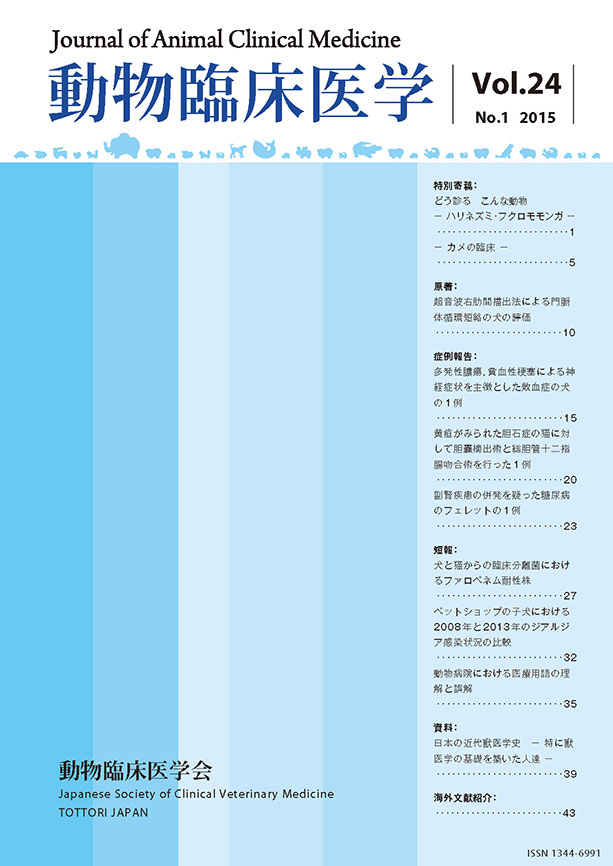Volume 24, Issue 1
Displaying 1-10 of 10 articles from this issue
- |<
- <
- 1
- >
- >|
Special Contribution
-
2015Volume 24Issue 1 Pages 1-4
Published: March 20, 2015
Released on J-STAGE: March 24, 2016
Download PDF (4771K) -
2015Volume 24Issue 1 Pages 5-9
Published: March 20, 2015
Released on J-STAGE: March 24, 2016
Download PDF (1436K)
Orijinal Article
-
2015Volume 24Issue 1 Pages 10-14
Published: March 20, 2015
Released on J-STAGE: March 24, 2016
Download PDF (1206K)
Cace Report
-
2015Volume 24Issue 1 Pages 15-19
Published: March 20, 2015
Released on J-STAGE: March 24, 2016
Download PDF (2739K) -
2015Volume 24Issue 1 Pages 20-22
Published: March 20, 2015
Released on J-STAGE: March 24, 2016
Download PDF (1642K) -
2015Volume 24Issue 1 Pages 23-26
Published: March 20, 2015
Released on J-STAGE: March 24, 2016
Download PDF (1245K)
Short Report
-
2015Volume 24Issue 1 Pages 27-31
Published: March 20, 2015
Released on J-STAGE: March 24, 2016
Download PDF (936K) -
2015Volume 24Issue 1 Pages 32-34
Published: March 20, 2015
Released on J-STAGE: March 24, 2016
Download PDF (892K) -
2015Volume 24Issue 1 Pages 35-38
Published: March 20, 2015
Released on J-STAGE: March 24, 2016
Download PDF (1147K)
Material
-
2015Volume 24Issue 1 Pages 39-42
Published: March 20, 2015
Released on J-STAGE: March 24, 2016
Download PDF (1906K)
- |<
- <
- 1
- >
- >|
